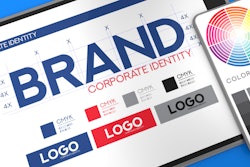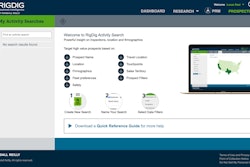
Knowing your own human behavior as a salesperson is important. But understanding the human behavior of potential customers is even more important to making a sale.
“People are different, but we are predictably different. And when we understand behaviors, then we can predict how [customers are] going to respond, which is really important in sales,” said Allen Phibbs, director of education, KEA Advisors, Maxwell Leadership executive member, DISC certified consultant. “When you understand how to relate to them … you can actually interact with people effectively and successfully,”
To that end, the National Trailer Dealers Association (NTDA) Parts Workshop held earlier this month delved into the DISC personality typing system. DISC was created by William Marston in 1928 and later was developed by Maxwell Leadership into a sales tool as part of The Maxwell Method of Selling.
“In a mature business, there aren’t a lot of new potential customers popping out of the woodwork, so you either have to sell more to your existing customers or you have to go out and steal one from someone else, which is more difficult. The other thing you want to do is keep them from stealing from you. Here is how we’re going to get there: increase your awareness; advance your personal development; increase your level of confidence; increase your satisfaction; and increase your value to customers,” he said.
According to Phibbs’ presentation, the most effective salespeople are the ones who truly understand human behavior, and who can modify their own behavior to that of their buyer.
“Your DISC style is a deeper analysis of how you sell yourself to others and you must sell yourself first. People buy from people most times. We buy, generally speaking, from those we know, like and trust,” he said.
“There are four styles. We use DISC, a behavior assessment. It’s simple. It’s based on our behaviors. We are emotional beings and that’s important to know,” Phibbs added.
DISC breaks down customers into four emotional behaviors or personality types. Following are some personalities of customers so salespeople can modify their selling style accordingly.
If the customer is decisive, individualistic, confident, is disinterested in “how” the job is done, likes change and likes to take chances, they have a D style. They buy products based on expert reviews, superior quality and their ability to get results.
If the customer is responsive, spontaneous, optimistic, enjoys small talk, emphasizes fun and likes to tell stories, they have an I style. They buy products based on word of mouth, aesthetics and their ability to give prestige.
If the customer is friendly, relaxed, cooperative, asks more questions and makes less statements, and is disinterested in “how the job is done,” they have a S style. They buy products based on practicality and simplicity.
If the customer is less responsive or expressive, emphasizes details, compares data and seems reserved or cautions, they have a C style. They buy products based on proven ability, product warrantees and available information.
Depending on the personality of the customer, there are do’s and don’ts for selling to the four different personalities/behaviors, according to the DISC method.
When selling to D types, be direct and to the point, focus on results and benefits and be confident and assertive. Don’t overpromise, joke around or make misleading claims.
When selling to I types, allow them to talk, listen to their stories and tell them the product benefits. Don’t give them too many details, disregard their concerns or be short in your responses.
When selling to S types, show sincere interest in them, give them facts, ask questions and let them talk. Don’t be aggressive or fast-paced and do not provide assurances.
When selling to C types, allow them to ask questions, be accurate with responses and provide facts and details. Don’t pressure them to decide now or ask personal questions and don’t overstate facts.
“There are two words to remember. These will help you when you’re selling and help identify people. The first word is ‘think.’ If in a conversation they use the word ‘think,’ they are either a D or C behavior style. If they use the word ‘feel,’ they’re probably an I or S behavior style,” Phibb said.
“When you think about your business relationships and your customers that you sell to … because you’re not communicating in a way that makes sense to them, they don’t even want to talk about price. They can’t ‘hear’ what you’re saying. Think and feel are two easy words to remember, but not easy to do but as you practice it see what happens,” he said.
Studies have shown relationships are broken, and it can be any kind of relationship, is when people don’t communicate in the right language, according to Phibbs.












